One of the of the world's oldest and most famous sailing ships, the French training vessel Belem, is currently navigating around Ireland.
The ship is carrying a crew of 16, along with 48 trainees.
The three-masted ship dropped anchor in the Blasket Sound having sailed from Cork.
Widely regarded as a ship of immense importance to maritime heritage, Belem was given the prestigious honour of transporting the Olympic Torch from Greece to France last April.
Speaking off the coast of Dún Chaoin, Aymeric Gibet, captain of the Belem, said it was a privilege to sail the iconic vessel in Irish waters and share her beauty with the Irish people.
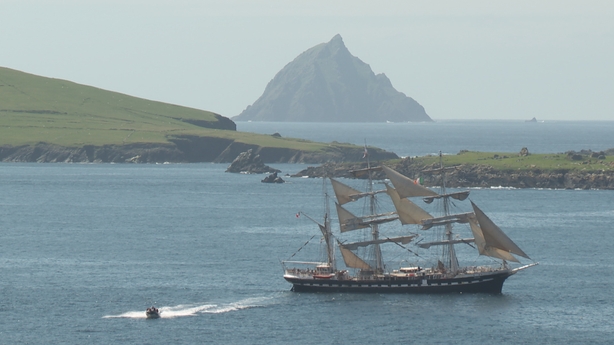
"Belem is a really special ship. There is so much history. She is the oldest European ship and the oldest three-mast in the world still sailing," he said.
"The Belem has a very special place in French hearts. They are very proud of this ship because they know that this ship is very famous all over the world."
The three-masted barque was built in 1896 and operated as a merchant ship for many years.
Belem was mainly used to transport cocoa beans across the Atlantic from Brazil for the production of chocolate. She also carried cargoes of rum and sugar from places like Guyana and Antilles.
In 1914 the Duke of Westminster purchased the Belem and transformed her into a pleasure cruiser.
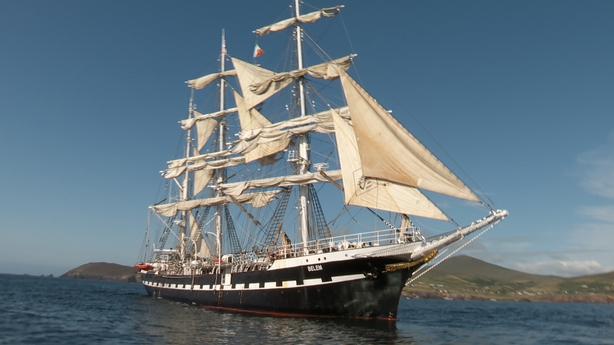
In 1921, the Belem fell into Irish ownership when Sir Arthur Ernest Guinness, of the brewing family, purchased the ship.
He completed her refurbishment, renamed her Fantôme II and successfully circumnavigated the world in 1923-24.
After World War II the ship was used as a naval school for orphans of Italian navy officers and cadets from the Italian merchant navy.
Today, the Belem has been donated by her current owners, Caisse d’Épargne, to a foundation which operates her as a naval school open to the public.
On this voyage there are 16 crew members along with 48 trainees.
There are a handful of Irish amongst them, including Graham O’Donnell who has a very special connection with Belem.
"Actually, my great-grandfather was the chief engineer on this vessel when she was the Fantome owned by the Guinness family sailing all around the world," said Mr O’Donnell.
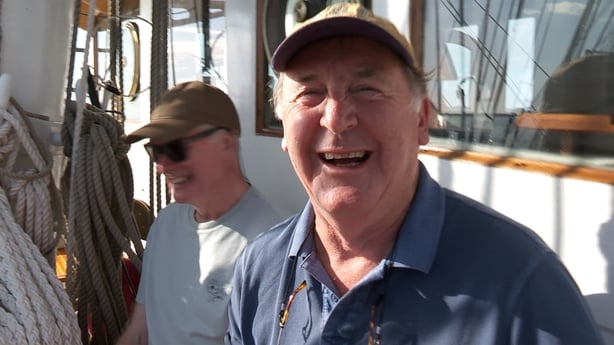
"I decided to come on this voyage because its exactly 100 years ago that he was down in that engine room bringing the Guinness family and all the girls around the world," he added.
Bound for Galway, Belem dropped anchor in the Blasket Sound to allow the crew and trainees to come ashore to explore Dún Chaoin.
Crew member Mewen Rigaill said the Belem provides trainees with a unique opportunity to develop their seafaring skills.
"There is an annual programme whereby the boat sails around Europe. This year we are rounding Ireland and then on to Scotland and to England.
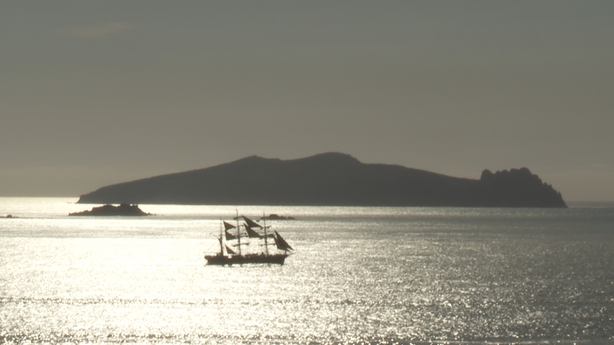
"You can come on board as a trainee and you can work and feel like an old deck-hand of the 19th century. So, you manoeuvre the sails by hand and you manoeuvre the vessel with the crew and you learn how to sail like in the old days."
The backdrop of the islands of Na Blascaodaí, framing the 58-metre, three-masted ship presented an enchanting scene.
However, sightings of such French sailing vessels were once common off the west Kerry coast.
One of the earliest depictions of the Blasket Islands can be found on a map drawn by French fishermen in 1617.
The French spent prolonged periods around the Blaskets fishing for lobster, crab and other species.
The colourful map also features a description of the rich nature of the fishing grounds around the islands and documents local fishermen securing good payment to act as pilots.
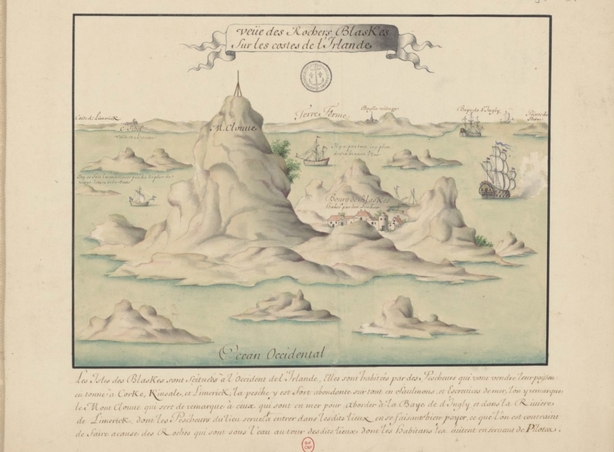
The arrival of the Belem in the Blasket Sound also reminded local people of the folk stories which speak of pirate ships from France in the 17th and 18th centuries operating off west Kerry.
Local historian Mícheal de Mórdha says many more French boats frequented the Blasket Sound in the late 19th century and early 20th century, including a boat owned by a Breton fish-buyer.
"He was from Paimpol in Brittany and he used to come here to buy lobster from the Blasket islanders. The islanders were very fond of him because he would give them nice things with him such as tobacco and bottles of brandy."
"He paid good money for the lobster and it was said about the Blasket islanders, that they were able to count up to twenty in French, having learned how to do so from the French fish-buyer as he counted out the money for them."






